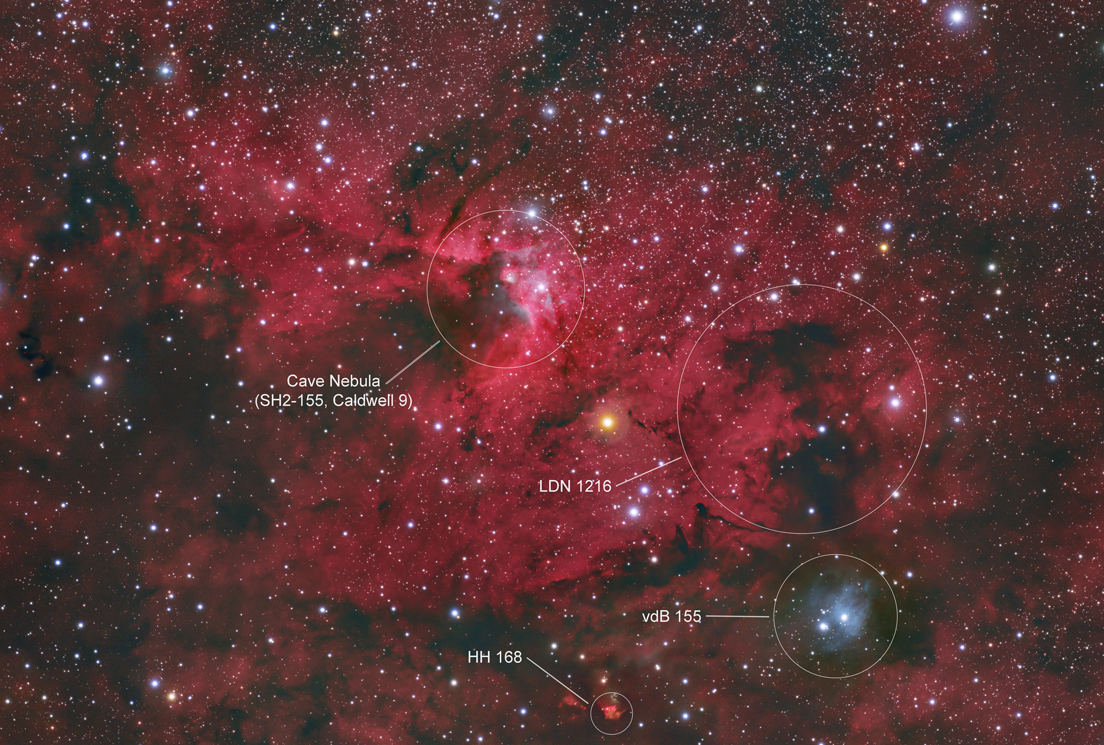Cave
Nebula Region (SH2-155, Caldwell 9), including LDN 1216, vdB 155, and
HH 168
Characteristics:
RA (J2000): 22h 57m 21s
Dec (J2000): +62 degrees 34' 36"
Position Angle: 358 degrees
Description:
This
image represents a total exposure of 15 hours through Red (5
hours), Blue (3 hours), Green (3 hours), and Ha (4 hours) filters
(more details below).
The Cave Nebula (SH2-155, Caldwell 9) is
a beautiful region comprised of both emission and reflection
components, located in
the constellation Cepheus. The
intertwining of emission and reflection components in the Cave Nebula
itself is reminiscent of a similar appearance shown in the Flaming Star
Nebula (IC405). LDN 1216 is a large dark nebula seen on the
right side of this field of view, lying just above vdB 155, which
is a pretty
reflection nebula.
The faint Herbig Haro object HH-168 can also be observed at bottom
center HH-168 (formerly
known as GGD 37). More information about this region can be found
on Rob Gendler's website here.
Photographic
Details:
Dates: Three nights in 2025: August 30, September 1, and
September 3.
Scope: Takahashi
FSQ106 at f5 on the Skywatcher EQ6-R mount.
Autoguider: ASI178 autoguider with SvBony 30mm guidescope, focal length
120mm.
Camera: ZWO ASI294MM at -10C,
with
7 position ZWO filter wheel. Pixel size is 2.3 microns (Bin 1x1),
yielding an image scale with the FSQ (530mm focal length) of 0.90
"/pixel (well matched for my seeing of 3 arcseconds).
Camera gain set to 50 (e-gain
2.13 electrons/ADU), offset 25.
Read noise at this gain level was 2.18 electrons rms.
Filters: Baader Red,
Green, Blue, and Ha filters.
Image acquisition
software: MaximDL for camera control and autoguiding; CCD
Commander for automation.
Exposures: Total
exposure 15 hours Ha: 4 hours, 300 second subs; Red: 5 hours, 120
second subs; Green: 3 hours, 120 second subs; Blue: 3 hours, 120 second
subs.
Processing:
Calibration,
integration, deconvolution (BlurXTerminator), noise reduction
(NoiseXTerminator) in
Pixinsight; subsequent processing in Photoshop.
Please
note: Graphics on this website may not be reproduced without
author permission.
Back to Nebulae
Home

